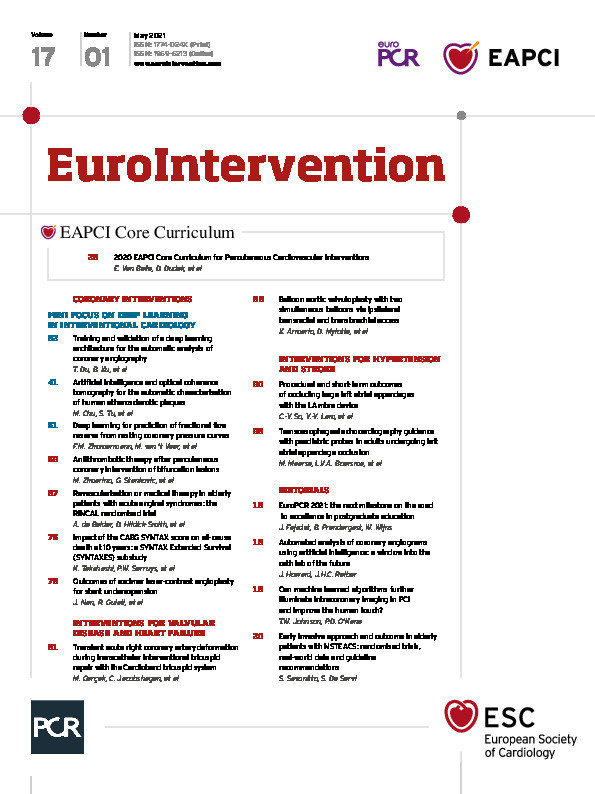Patients older than 75 years represent about 40% of coronary care unit admissions with non-ST-elevation acute coronary syndromes (NSTEACS)1; however, they have been underrepresented in randomised clinical trials (RCTs). Only during the last decade have dedicated RCTs compared an early invasive (EI) with an initially conservative (IC) approach in elderly patients2,3,4. The first of these, the Italian Elderly ACS randomised trial, enrolled 313 NSTEACS patients aged ≥75 years and found a reduction with EI treatment in the composite primary 12-month endpoint (mortality, non-fatal myocardial infarction [MI], disabling stroke and readmission for cardiovascular causes or bleeding) in patients with elevated troponin (Tn) levels (60% of the study population; HR 0.43, 95% CI: 0.23-0.80), with no benefit in Tn negative patients. The results in the overall trial population were also neutral (HR 0.80, 95% CI: 0.53-1.19)2. The After-Eighty trial randomised 557 patients ≥80 years (95% with elevated Tn levels), after initial stabilisation: the composite one-year endpoint of MI, urgent revascularisation, stroke, and death was significantly lower in the EI group (HR 0.53, 95% CI: 0.41-0.69)3.
In this issue of EuroIntervention, the results of the RINCAL randomised study are published, comparing EI versus medical therapy in NSTEMI patients ≥80 years, rigorously selected by ischaemic symptoms, ECG changes and elevated troponin levels4.
The study, which was interrupted after the enrolment of 251 patients over a period of four and a half years, revealed no difference in the primary endpoint of mortality and non-fatal MI at one year (HR 0.79, 95% CI: 0.45-1.35).
In the three elderly-oriented studies, benefit was observed regarding recurrent MI and angina, with no significant reduction in mortality. However, no mortality reduction in NSTEACS with an EI approach versus an IC one was observed in the general NSTEACS population either. In a Cochrane Collaboration review including eight RCTs with a total of 8,915 participants, there was no reduction in mortality (RR 0.87, 95% CI: 0.64-1.18) at six- to 12-month follow-up5, and the observed risk reductions in MI, recurrent angina and re-hospitalisation were similar to those observed in the three studies in the elderly2,3,4. Among the possible reasons for the lack of mortality benefit in RCTs is the fact that only about half of the patients undergoing angiography for NSTEACS will eventually undergo revascularisation, the procedure potentially impacting on mortality, and that only the fittest and less comorbid patients are enrolled. However, consistent mortality reductions have been observed in real-world registries of elderly NSTEACS patients over the last 20 years, concomitantly with an increase in the use of an EI approach1,6. Nowadays, elderly NSTEACS patients undergoing percutaneous coronary intervention (PCI) fare much better than their STEMI counterparts7.
Despite this evidence and the current ESC NSTEACS Guidelines recommending “to apply the same interventional strategies in older patients as for younger patients” (class I, level of evidence B)8, many elderly NSTEACS patients are still treated conservatively. PCI was performed in less than one third of patients enrolled in the large SWEDEHEART registry9. Those treated conservatively were older, more frequently women and with more comorbidities. Possible reasons for the aversion to invasive treatment are overestimation of procedural and bleeding risk and technical difficulties in approaching tortuous vessels with multiple calcific lesions. Issues to be considered to balance efficacy and safety of an EI approach in elderly patients with NSTEACS are reported in Table 1.
Conflict of interest statement
The authors have no conflicts of interest to declare.
Supplementary data
To read the full content of this article, please download the PDF.

